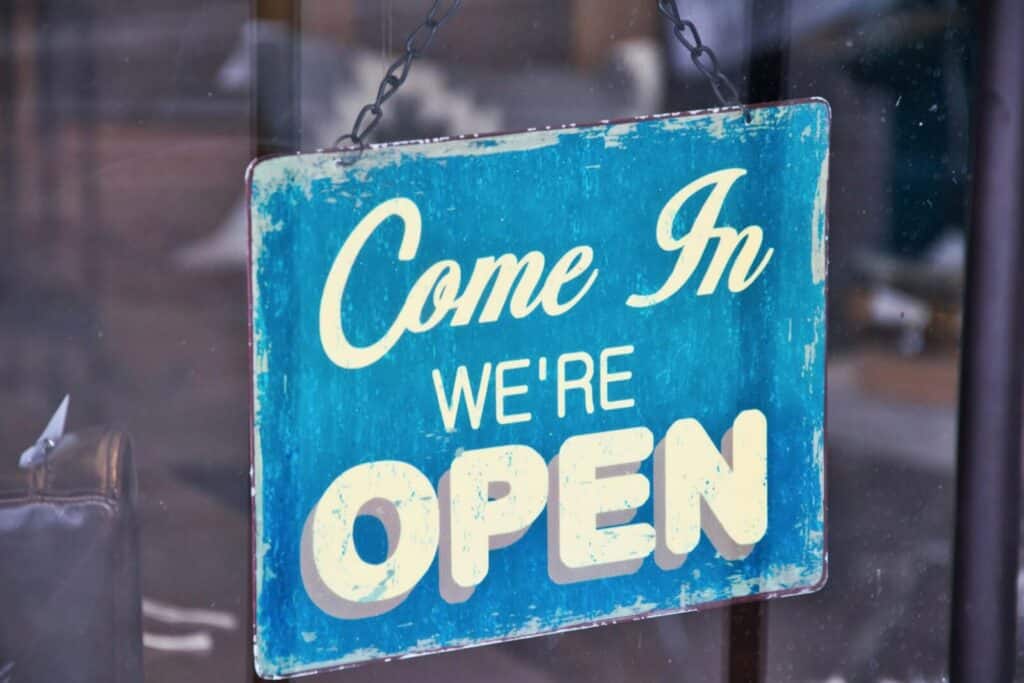Customer acquisition costs in digital marketing are on the rise.
And they aren’t cooling off.
Digital marketing acquisition costs have surged dramatically. A study by SimplicityDX reported a 222% increase in customer acquisition costs over the last eight years:
- Social media and search advertising costs: By the end of 2021, the cost per thousand advertisement impressions (CPMs) on social media and the search cost per click (CPC) had risen by 22% and 23% respectively, year-over-year.
- Pay per click costs: From 2022 to 2023, the average CPC rose by about 5%, with a 20% increase in cost per lead (CPL). In the last quarter of 2023, Google Search Ads’ CPCs went up by 9%, contributing to a 17% increase in advertising spend. By Q1 2024, the year-on-year increase in CPC had reached 13%, resulting in a 21% increase in ad spend.
- General increase in digital marketing costs: Industry reports highlighted ongoing increases in digital marketing budgets due to rising customer acquisition costs, with no signs of abatement.
To make matters even more challenging for businesses like yours:
- Increased touch points before purchase: Since 2020, the average consumer requires more touch points before making a purchase decision, typically ranging from 6 up to 20+ interactions with a brand before buying. What’s driving this? Consumers have a massive variety of information channels at their fingertips. As a byproduct, they’re extensively vetting brands and businesses before making a purchase decision.
- Influence of reviews and social proof: Some studies show over 85% of consumers say they check online reviews before making a purchase decision. Most of them check multiple review sources or sites before buying.
- Impact of social media presence: Customers and clients want to buy from brands and companies with an active social presence. Brand presence on social media and the quality of engagement (comments, likes, shares, etc.) directly correlate with purchasing decisions.
If you’ve been scratching your head for what to do about the wild increase in CAC––you’re not alone.
TL;DR
Which is why we’re going to cover:
- What is Customer Acquisition Cost?
- Why Does CAC Matter?
- CAC Formula: How to Calculate Your Company’s Customer Acquisition
- What to Include in Your Average Customer Acquisition Cost
- 5 Ways to Lower and Manage Your Business’s Digital Marketing Acquisition Costs
What is Customer Acquisition Cost?
In its simplest form, Customer Acquisition Cost (CAC) quantifies the total expenses to acquire a new customer.
CAC = (Total cost of sales + marketing expenses) / (Total number of customers acquired)
In digital marketing, CAC covers costs from your sales team’s salaries and software to paid ads, content production, SEO, marketing automation, and social media strategies.
Here are some examples similar to some clients we work with:
- A homebuilder: They focus on attracting homebuyers using PPC advertising, social ads on Meta, video ads on YouTube, SEO on their website, virtual tours, and social media. We calculate their CAC by summing up digital initiative costs and dividing by the quarterly new homebuyer count.
- A weight loss company: Draws patients through local SEO, online ads for appointment bookings, and sharing helpful health blogs via their social content strategy. Their CAC includes website maintenance costs, ad spend, and online review management, divided by the number of new patients.
- A law firm: Specializing in personal injury, they engage potential clients through a targeted Google AdWords campaign, retargeting ads on social media, SEO to keep them at the top of search engines, and content marketing to educate and build trust with their target audience. They measure CAC by totaling costs for online ads, SEO, content, and social media against new client consultations.
Each example shows how businesses manage and optimize CAC for better digital marketing outcomes and a higher ROI.
Why Does CAC Matter?

Customer Acquisition Cost is the difference between a business barely surviving, thriving, or folding.
If your CAC is higher than your revenue, your business will fold.
Analyzing and improving your CAC prevents losses while driving profitability and growth.
CAC Formula: How to Calculate Customer Acquisition Cost
Here’s a high-level formula for how you’d calculate your CAC.
CAC = (total digital marketing expenses) + (total sales expenses) / total new customers or clients acquired
Businesses typically assess their CAC over set time intervals depending on specific sales cycles, marketing activities, and financial reporting periods:
- Monthly: Many businesses review their CAC monthly, especially those in dynamic industries where quick adjustments to marketing strategies can significantly impact customer acquisition costs and outcomes.
- Quarterly: Quarterly assessments align with standard financial reporting periods, allowing businesses to evaluate the effectiveness of their marketing strategies over a longer period and make adjustments for the next quarter.
- Annually: Yearly reviews are common, particularly for strategic planning and budgeting purposes. This interval helps businesses understand year-over-year trends and the long-term effectiveness of their customer acquisition strategies.
- Per Campaign: Businesses also analyze CAC for specific marketing campaigns regardless of their duration. This allows for immediate insights into the effectiveness of particular marketing efforts and helps in making timely adjustments.
What to Include in Your Average Customer Acquisition Cost

Let’s get into the weeds.
If you’re running the customer acquisition cost formula as you’re reading this, you need to build a complete view of the expenses involved in getting new business.
Let’s look at the combined cost of sales and marketing.
Sales Expenses
The big buckets for sales expenses normally include:
- Sales salaries and commissions: This includes the base salaries of your sales reps, as well as any commissions they earn on closing deals with new customers.
- Sales training and development: The cost of training your sales team on your products or services, specifically any programs focused on acquiring new customers, not product updates for existing customers.
- Sales technology and tools: Costs associated with software used by the sales team to close deals with new customers. This can include CRM software, sales automation tools for prospecting and outreach, and tools for creating sales presentations.
Digital Marketing Expenses
What about in digital marketing?
Expenses to consider are salaries, freelancers, contractors, and labor costs.
Also, you will need to factor in these expenses:
- Paid advertising (PPC, social media ads, display ads): Costs associated with creating and running targeted advertising campaigns across various digital platforms to attract new customers.
- Content marketing (content creation and distribution): Costs associated with creating content (written, visual, video) specifically designed to attract new customers, as well as promoting that content through various channels to reach your target audience.
- Marketing automation software: Subscription fees for marketing automation platforms that streamline tasks like email marketing, lead nurturing, SEO tools, content creation/optimization software, and customer segmentation––focusing on tools directly tied to acquiring new leads.
- Website analytics and conversion tracking: Costs associated with website analytics tools used to track traffic, user behavior, and conversion data from your digital marketing efforts aimed at acquiring new customers.
- Additional considerations (optional): Costs associated with tools or services used for landing page optimization focused on lead generation, and SEO tools (if your SEO strategy heavily targets new customer acquisition).
Now that you’ve got a full picture of costs associated with a company’s customer acquisition efforts, let’s dive into how to lower and manage your costs…
5 Ways to Lower and Manage Your Business’s Digital Marketing Acquisition Costs
1. Optimize Your Sales and Marketing Funnel
Your sales and marketing funnel are the lifeblood of your customer acquisition process.
Here’s how to optimize it to capture more leads and convert them into paying customers:
Identify leaks: Analyze your funnel using website analytics tools like Google Analytics to pinpoint stages where leads are dropping off. Are they abandoning forms, clicking away from landing pages, or failing to engage with your calls to action (CTAs)?
Diagnose the leaks: Once you’ve honed in on the drop-off points, dig deeper to understand why leads abandon your funnel at these given points.
Fix the leaks: Here are the most common funnel leaks we see with our clients and prospects and how to address them:
- Unclear value proposition: You’d be surprised how many businesses have unclear value propositions in their sales processes, website content, etc. Make sure your messaging clearly communicates the benefits your product or service offers and how it solves your target customer’s problems.
- Poor website usability/user experience: If your website is slow, clunky, messy, or too wordy––visitors will bounce and take their business elsewhere. Optimize your website, funnels, and processes for the best possible user experience. With your website, make sure you have clear navigation, fast load times, and mobile-friendliness to keep visitors engaged.
- Ineffective CTAs: There’s a good chance you aren’t using CTAs early and often. CTAs that are specific, action-oriented, and strategically placed throughout your funnel to guide leads toward the desired conversion step.
Remember, optimizing your funnel or customer journey isn’t a one-time change.
You need to keep monitoring your funnel’s performance, look for new leaks, and use data-driven solutions. You can optimize your lead flow and improve your conversion rates.
2. Optimize Your Pricing Strategy
Your pricing strategy directly affects your customer acquisition costs and profitability.
Here’s how to optimize your pricing to attract customers and generate revenue:
- Align with customer value: Does your pricing reflect the perceived value of your product or service offered to your target market? Your own costs play a big factor in pricing. But if you’re priced too low, you won’t be profitable. Priced too high? You’ll scare off new leads, prospects, and business. Do market research and competitor analyses to understand what similar offerings cost. One of the simplest ways to beat out the competition is to ask yourself: “Could I offer even more value at a competitive or slightly higher price?”
- Consider offering tiered pricing: Depending on your products or services, you could offer multiple pricing options to cater to different customer needs and budgets. This can help you attract a wider audience and convert leads who might find your premium offering too expensive upfront.
- Experiment with promotional pricing: Strategic use of discounts and limited-time offers can attract new customers and boost sales. However, avoid relying solely on discounts, as it can cheapen your brand perception in the long run.
- Track and analyze customer acquisition costs: Monitor how much it costs to acquire each customer for different pricing strategies and marketing channels. This data will help you identify the most cost-effective ways to reach your target audience.
By weighing these factors, testing, and refining your pricing strategy, you’ll be able to find the sweet spot that maximizes your customer acquisition efficiency and profitability.
3. Improve Customer Acquisition Costs Through Sales and Marketing Spend
Getting the most out of your sales and marketing budget is crucial. Here are some strategies to maximize your return on investment (ROI):
- Focus on metrics and analytics: Track key performance indicators (KPIs) to measure the effectiveness of your sales and marketing efforts. The data will help you see what’s working and what’s not, giving you insight on how to optimize your campaigns and allocate resources for better results.
- Invest in sales and marketing automation tools: Use technology to streamline tasks, personalize outreach, and automate repetitive processes. This can free up your team’s time to focus on high-value activities and improve overall efficiency. Examples can include using intelligent, personalized AI chat features on your website to automate inbound lead intake. You could streamline sales processes by studying sales call notes and recordings to optimize sales scripts. For marketing, offer an incentive like a free consultation or helpful lead magnet for email signups. Then, send drip campaigns to engage new email leads.
- Align sales and marketing teams: Make sure your sales and marketing teams are working collaboratively towards common goals. This can involve joint lead nurturing campaigns, content creation initiatives, and communication strategies to deliver a seamless customer experience throughout the buying journey.
- Optimize your sales process: Refine your sales pipeline to find and remove bottlenecks that slow down conversion. Provide ongoing sales training and coaching to equip your team with the skills and knowledge to close deals efficiently. Dig into the marketing channels and activities that are bringing in most of your high-quality leads and customers and which are underperforming and eating into your budget.
4. Speed Up Response Time for New Customers and Prospects
This should go without saying.
But one of the simplest, most effective, and potentially low-tech ways you can improve your CAC is to speed up your response time to new customers, leads, and prospects.
For example, your response time to a new lead or prospect is within 24 hours.
Your primary competitor’s response time is under 15 minutes.
Who’s going to win that business?
5. Determine and Optimize Your Payback Period
Your payback period tells you how long it takes to recoup the cost of acquiring a customer.
A shorter payback period highlights a more efficient customer acquisition strategy.
Here’s how to find and optimize yours:
Calculate your payback period: Divide your customer lifetime value (CLTV) by your customer acquisition cost (CAC). CLTV is the total revenue a customer generates over their lifetime with your business.
Analyze your payback period: Industry benchmarks can give context for your payback period’s efficiency. However, it’s important to consider your specific business model and growth goals.
Reduce your payback period: There are several ways you can work to shorten your payback period…
- Optimize marketing campaigns: Improve targeting and messaging to attract higher-value customers with a lower acquisition cost.
- Increase customer lifetime value: Encourage repeat purchases or upsells to generate more revenue from existing customers.
- Improve customer retention: Reduce churn by providing excellent customer service and building strong, long-term customer relationships. By doing this, you’ll increase your chances of generating more referrals––another one of the best ways to lower your cost of acquiring a new customer.
By monitoring and optimizing your payback period, you can ensure your customer acquisition efforts are efficient and contribute to your business’s long-term growth.
In Closing
CAC is critical for business survival, improvement, and growth.
Use the above steps as a guide to systematically reduce costs and automate expensive manual processes.
If you’re struggling to lower costs and improve results with your digital marketing channels and campaigns, we can help.
Schedule a free strategy call with our digital marketing and advertising team today.
Recommended Reading
- Hiring the Best PPC Agency in 2024: A Complete Guide
- 2024 PPC Trends: Strategies You Cannot Avoid
- Generative AI in Marketing: 6 Ways to Level Up Your Results
- Determining The Average Cost Per Case Sign Up In Your Local Market
- Medical Lead Follow-Up Guide: How to Close 9x More Patients
References
- clearbit.com – CAC: What it is, why it’s rising, and why marketers should care
- linkedin.com – Control, Rising Cost of Customer Acquisition in Digital
- marketingcharts.com – Most Retailers Say Customer Acquisition Costs Have…
- hubspot.com – The Hard Truth About Acquisition Costs (and How Your…
- lek.com – Fighting Rising Direct-to-Consumer Customer Acquisition Costs
- linkedin.com – What is CPC inflation in Google?
- searchengineland.com – Google search CPCs up 9%, pushing ad spend up 17%
- optmyzr.com – Google Confirms Inflating CPCs: What Advertisers Need to…
- brightbid.com – Beat Google CPC Inflation: 8 Strategies to Maximize ROI
- searchengineland.com – Report: Google Search CPC up 13% YoY; ad spend…
- searchenginejournal.com – PPC Experts Weigh In On CPC Inflation


